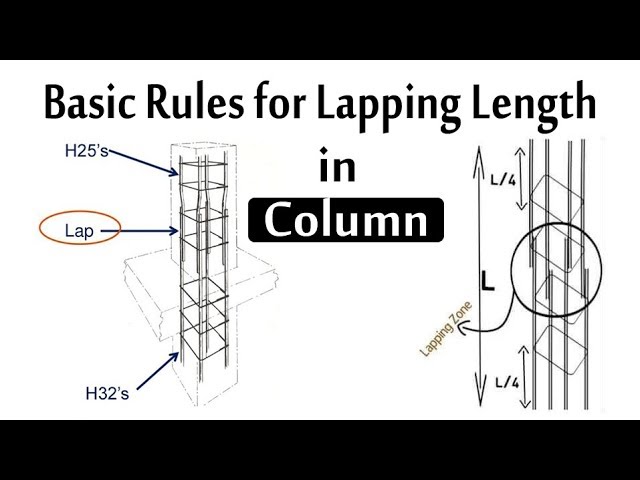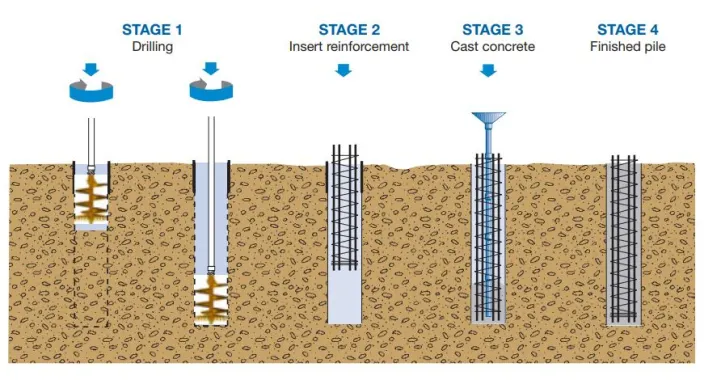Always get confused about how many types of columns are there in the construction. Don’t worry now, this is the guide that will let you know all the types of columns used while construction. Keep reading!
Columns are considered the most crucial structural element in buildings. It adds strength and enhances the durability of the building. Depending on the type of structure, columns are of different types. This article will shed light on the mean and type of columns required in buildings. But before that, let’s begin with what the column is first and what is the importance so that you can better idea about the subject.
What exactly is a Column?
Column generally refers to the vertical load-bearing structure that supports axial compressive load primarily. This structure generally transmits the structure load to the building foundation. Columns are commonly cast monolithically in reinforced floors, concrete beams, and other structures.

Also, the column’s bending action can generate tensile forces over the cross-section part. This is why columns are also known as compression members because the compressive forces will dominate the load-bearing behavior.
A common feature of columns is that they frequently have deformations of almost one or both cross-section axes. Different kinds of columns that are utilized in structures or construction projects will be explored in this article below.
What is the Importance of Column in Construction?
Columns are generally constructed with bricks, stones, steel, blocks, and concrete. The material offers excellent compression and easily allows the structure to bear axial load. In addition to this, some other benefits of constructing columns are:
- Columns are designed to carry the axial load and handle compression forces.
- Columns can carry wind load, snow load, horizontal forces, and bending forces in building structures.
- It helps to prevent the failure of the structure.
- Constructors use arbitrary rubble masonry to develop a tiny construction to a particular height. Still, they can utilize random rubble masonry to develop a multi-story building since the structure can transfer a significant load to the bottom of the ground.
- The column is often built to uniformly transfer vertical compressive load and other pressures, such as wind and frost, to the base, and it may support the building even in the event of an earthquake or other pressures.
Keeping all the importance in mind, columns are a very essential part of any building construction. Let’s check out the types of columns used in the construction.
Different Types of Columns Used in Buildings
Before coming on different types of columns, do you know that there are different types of cement also used in construction? Click on the link to know more about cement types.
Back to the columns, depending on the building structure, columns are of different types, which are as follows. Have a look!
1. Columns Based on Shapes
These are some of the columns based on shapes.
Circular Columns
Circular columns are commonly used in the elevation and piling of buildings only for aesthetic purposes. In this kind of column, 4 essential longitudinal steel bars have been used as reinforcement.
The bending resistance power is relatively higher compared to other forms of columns. The circular columns are also used in bridge pillars because of their excellent resistance to deflection.

Rectangular and Square Column
These columns are commonly used in heavy structures and building constructions. Rectangular or square columns are easier to build and mold because they are simpler to shutter and reinforce from collapse under stress while the cement is still in a flowable state than circular ones. Moreover, rectangular and square columns are the least expensive compared to another.

L and T Shape Columns
L-shaped columns are generally utilized in the boundary wall corners and are similar to square, rectangular columns. The T-shaped columns are utilized based on structural design requirements. This type of column is used in bridge construction.

Also, read our guide on different types of walls and where to construct them.
2. Columns Based on Reinforcement Type
There are many types of columns that are based on reinforcement. These are as follows:
Spiral Column
The columns are known as spiral columns when reinforced with consistently and tightly spaced spiral reinforcements. Spiral columns’ primary purpose is to support them transversely and keep them from the barrel. Six bars serve as flexural bars in spiral-reinforced columns.
Tied Columns
Usually, reinforced concrete is used to build this. Closely spaced tie reinforcements contain longitudinal reinforcements. The column will undergo shear failure and drive straight between ties if ties are positioned too wide apart. 95% of all construction columns are thought to be tied columns.

Composite Column
These columns are made of structural steel or heavy gauge column contained in concrete that has been spirally and longitudinally strengthened. In truss constructions, composite columns are frequently utilized to prevent steel from rusting. In addition to having a compact cross-section and greater strength, this kind of column performs well in a fire.

3. Columns Based on Loading Type
Find out the types of columns based on loading technology.
Uniaxial Eccentrically Loaded Column
A column is referred to as Uniaxial eccentrically loaded when the axis of vertical loads acts unconventionally on either the X or Y axis of the cross-section of the column rather than crossing the column’s center of gravity. This loading technique applies to columns firmly attached to a girder only on one side, such as edge columns.
Axially Loaded Column
A column is said to be axially loaded if vertical axial tensions act on the center of gravity of the cross-section of the pillar. Axially loaded columns are uncommon in architecture because it is impractical to align vertical loads with the center of mass of the column section.
An example of this kind of column is indeed the interior column of non-linear and non-structures with balanced loads from concrete slabs coming from all directions.
Biaxial Eccentrically Loaded Column
A column is said to be biaxial eccentrically loaded when the vertical loads acting on it do not align with the center of gravity of its cross-section and don’t act on its X or Y axis. With beams permanently coupled at a right angle at the apex of columns, biaxially loaded columns are typically employed in corner columns. These columns are utilized in unique building methods.

Do you know there are different types of slabs as well in the construction business? Any idea about the difference between one-way slabs and two-way slabs?
4. Columns Based on Slenderness Ratio
Have a look at the columns based on the slenderness ratio.
Long Column
A column is said to be as long if its effective length to its smallest diameter ratio is more than 12. A lengthy column breaks by buckling or bending. Long columns are not often favored since they are weaker than short columns that share the same cross-sectional area.
Short Column
A column is referred to be a short columnar if the ratio of its effective length to its smallest diameter ratio is much less than 12. Concrete crushing causes a short column to collapse.

5. Columns Based on Construction Material
Find out columns based on construction material. Speaking of material, do you know fly ash bricks are getting popular these days? There are many advantages of using fly ash bricks that you should know before going to conventional clay bricks.
Steel Column
Steel columns are columns that are constructed out of steel. The development of steel structures is undergoing enormous global trends. Comparatively speaking, steel construction is more robust, adaptable, and long-lasting than that concrete buildings.
There are several distinct steel columns; however, the one used in steel constructions the most frequently is the T section steel column.

Reinforced Concrete Column
Concrete columns that have steel reinforcement are referred to as reinforced concrete columns. The construction of buildings mostly uses this column. Concrete is robust under compression but fragile under stress. To boost its capability for tension, iron reinforcing is therefore installed.

Timber Column
A column built of wood is referred to as a timber column. In the preceding century, wood columns were common. Due to the limited availability of other resources at the time, wood is mostly seen in older buildings. Timber is a sturdy and long-lasting building material if properly cared for. Wood is dried to eliminate moisture, which gives it strength and helps it to weigh less.

Block Column
AAC blocks or cement concrete blocks are used to build block-style columns. The compressive weight of the block columns is lower than that of a concrete column.

Brick Column
Columns of the brick masonry variety are typically utilized in load-bearing constructions. It contributes significantly to the stability and reinforcement of the masonry building. Adding brick masonry columns over concrete columns improves their visual appeal in certain cases. Different cross-sections for brick masonry columns include round, rectangular, square, and elliptical.

Stone Column
It refers to columns constructed from stones and other debris. The majority of the time, they are employed to improve the home’s visual appeal.
Types of Columns: Final Words
In a nutshell, these are some of the types of columns used in the building structures. Columns can help to add strength to the building and allow bearing axial load. Moreover, it helps to protect the building during natural disasters like earthquakes and heavy winds. Hope this information will help to understand what kind of column will work in different building structures.
If you know any other types of columns that we might have missed, do let us know in the comments section below.
Why are columns used in construction?
The column is used to strengthen the building and to equally transmit the uniaxial compression load and other pressures, such as snowfall and wind, to the foundation. It may also support the structure during an earthquake or when subjected to other forces
What is Column Pedestal?
Column Pedestal refers to the underpinning structure created to sustain the compressive force from the column. Its purpose is to continue passing the weight to the footing.
Why are Rectangular Columns used?
They are often employed in the building of massive constructions and buildings. Rectangular or square columns are easier to build and cast than circular ones. The best and least expensive ones are square or oblong.
Why there are so many types of columns in constructing buildings?
The major reason for building columns is to carry axial loads. Not only that, columns bear loads of snow, and wind that may bend the structure. However, the design of the building can be different and that is the reason to use different types of columns that are based on the construction design.
Where are columns mostly used?
Columns are generally used in construction to support arches or beams. These beams are there to support the ceilings.
Why are round columns used?
Round or circular columns are generally used where there are no walls on any side of the column. Circular columns look pleasing to the eyes as well and are built on bridges mostly.




